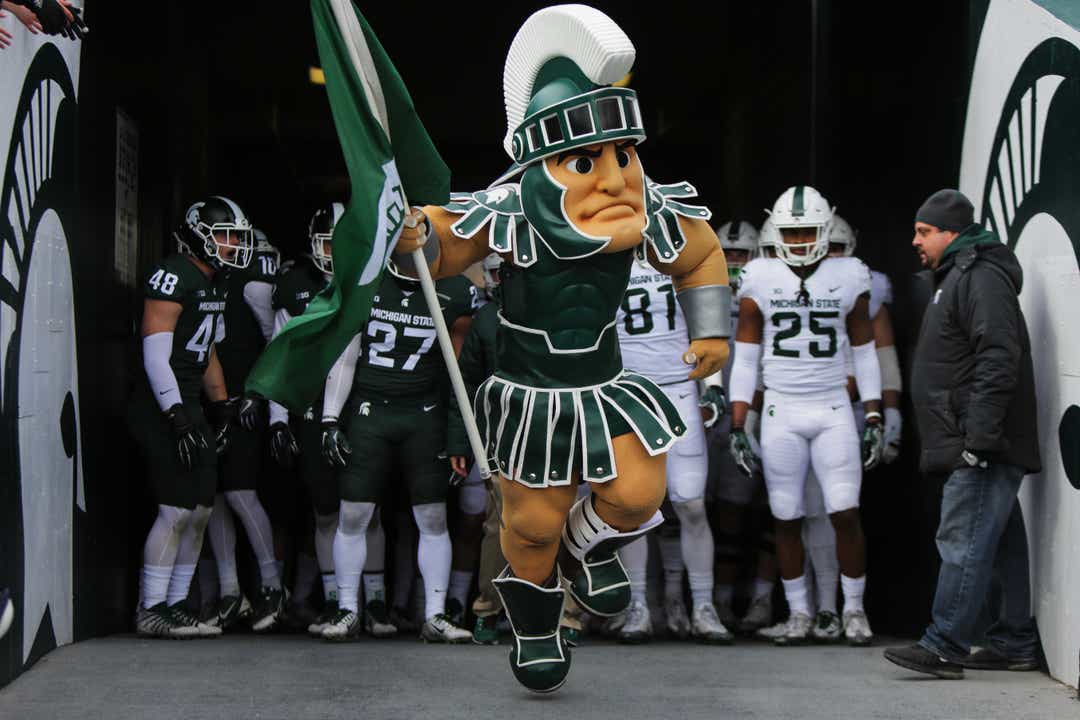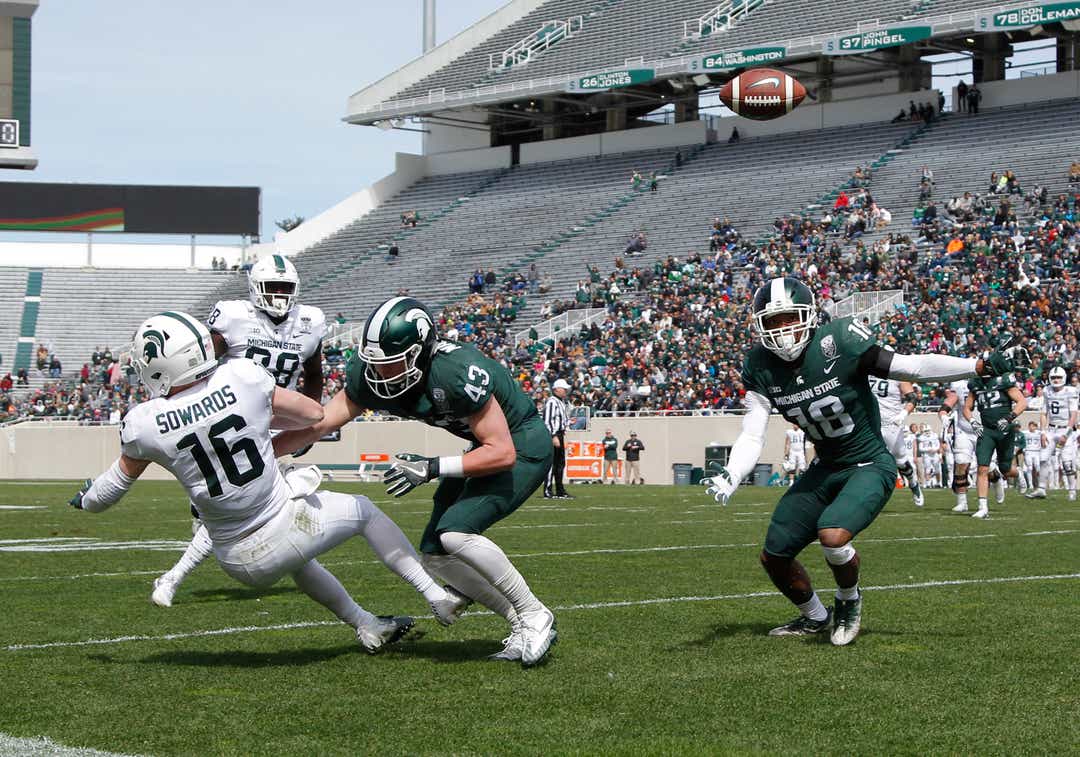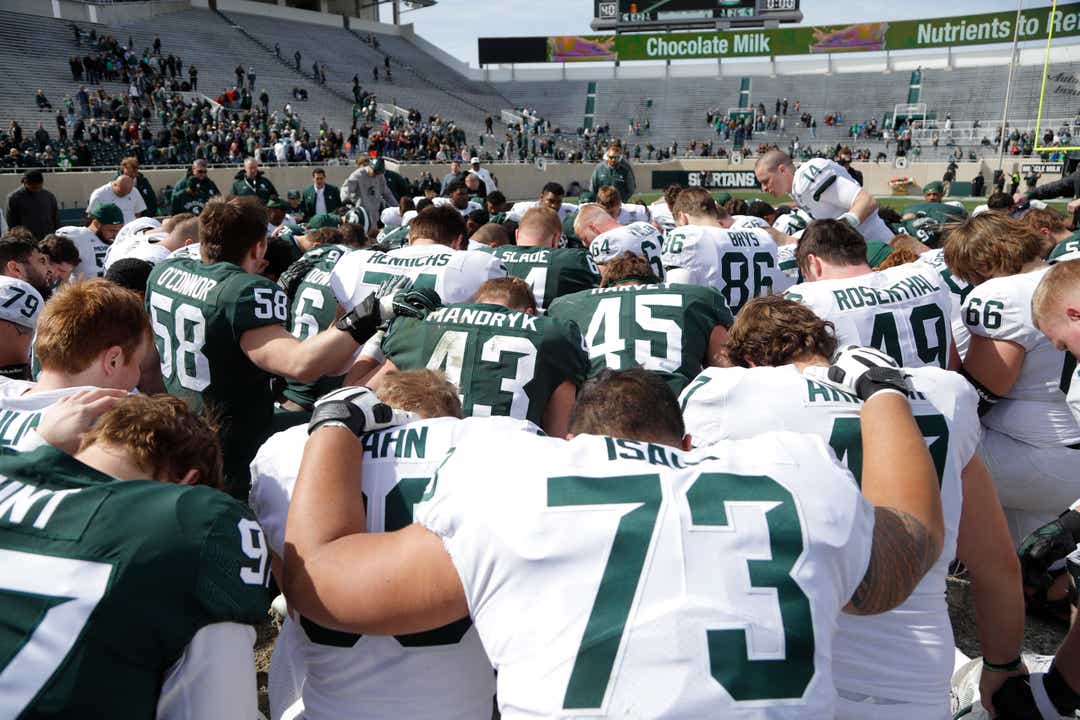On Monday, Michigan State football’s players will embark on their first team sessions in the Mel Tucker era.
Finally. At least for now.
Because even with a two-week period of team activity coming, uncertainty remains ahead of the Spartans and the rest of college football. And change is beginning to happen.
The Big Ten eliminated nonconference competition Thursday for all fall sports, followed by the Pac-12 on Friday. Ohio State suspended its voluntary training. The Ivy League halted its sports until the beginning of 2021. Other schools around the country already are dealing with significant coronavirus outbreaks after players’ return to campus, and other conferences beyond the West Coast and Midwest are weighing similar strategies to the Big Ten's.

Already forced to pull the plug on the first major event in his tenure, March's Big Ten basketball tournament, new commissioner Kevin Warren’s next decision could be even more seismic: Cancel the football season entirely.
“We may not have sports in the fall,” he said on Big Ten Network. “We may not have a college football season in the Big Ten.”
It is a stark admission of uncertainty in a sports world that often puts optimism over realism and within which coaches are used to ultimate control.
Living in limbo
Time is waning for Warren and the other Football Bowl Subdivision commissioners to make that call, one that could have significant financial ramifications for all 14 Big Ten schools and their counterparts nationally.
The Big Ten’s current plan — only 10 games against league opponents — allows the conference to take the reins of testing. It also leaves safety risks to the whims of 18- to 23-year-olds avoiding the social scene of a typical college student.
Good luck with that.
Ultimately, programs will not try to follow the isolation measures adopted by professional leagues; because doing so would give college athletes another legal argument toward getting paid from the billions of dollars in revenue generated predominantly by football and men’s basketball.

So sticking to members-only play is about as close to a bubble environment as is possible, even though that may not be feasible to sustain during a pandemic, thanks to how the expansion era has turned previously regional conferences into alliances that sprawl halfway across the country.
The next three weeks, when teams can resume some semblance of normality, will be pivotal.
Tucker and his new coaches — who had their debut spring practices canceled in March four days before they were to begin — finally will be permitted to work hands-on, from Monday through July 23. However, the NCAA rules approved in June limit what can be done — eight hours of weight training and conditioning, six hours for walk-throughs (with a football) and six hours for film review and/or meetings (team, position and one-on-one). Athletes are required to get at least two days off.
Yet the situation remains fluid and can be stopped at any point, either by the school, the Big Ten or the NCAA. And there may not even be a need for a preseason camp if the season gets scuttled.

Season shift unrealistic
The fallback plans if that happens that should be addressed sooner rather than later — but moving the entire season to spring isn't one of them.
At least not in the sense many are thinking.
It is unrealistic to move all 12 games, plus conference title games, bowl games and the four-team College Football Playoff into a slot months later. Particularly because things could be no different than they are now, lacking a vaccine and facing a scarcity of testing and high costs to do the daily or weekly checks that are needed. This is especially true if the NCAA remains hands-off and does not implement uniform testing across sports.
There also is the potential for health and safety issues beyond COVID-19. Football already has a significant amount of inherent injury risks on a normal schedule. A spring season could last into April or May, with players then reporting back to preseason camp in August. That would leave minimal time for healing from injuries after an already physically demanding season.
This was an idea raised Thursday by former Ohio State coach Urban Meyer on Fox Sports 1’s Big Noon Kickoff show — hours before the Big Ten’s announcement — when he said there is “no chance” there will be a full spring football season. His on-set colleagues, Reggie Bush, Matt Leinart and Joel Klatt, agreed with him.
“I think at this point, coaches and teams will do anything just to play. And if that's the last resort, then maybe that's a last resort,” Leinart said. “But spring practice is not the same as a spring football season. There's not even a comparison. I would just worry about the players' safety.”
Alter spring ball
There is a logical solution. It has been discussed for decades and could expand college football’s calendar permanently.
Coaches have floated ideas for changing spring practices — which often end with a public intrasquad scrimmage — to allow interscholastic competition. This is the time to experiment with that theory.
Allow FBS teams to schedule home-and-home games with one league opponent and two nonconference games with nearby schools (to minimize travel costs and potential transmission risks). These four exhibitions, that would not count in standings, also would align with the NCAA’s recently changed rules that allows players to participate in four games and retain redshirt eligibility.
There are potential longterm financial benefits beyond an experimental trial this spring, when the pandemic would still likely limit fan attendance. A four-game spring exhibition system could replace the current system of public scrimmages that are typically free, adding revenue opportunities in ticket, parking and concession sales.
Tweak the rules and get creative. Have drill work in practice between the two squads for a day beforehand, much like the NFL does during training camp. Play two or three quarters split between the top units. Make a quarter for first-year players. Give coaches flexibility to teach on-field during the game action. It would give players the valuable reps threatened by the loss of the 2020 season and down the road allow younger players a chance to work in live settings well before the games matter.
Most of all, it would give schools a chance to create protocols for safe returns during or after the pandemic, all while giving coaches a lower-risk chance to make up for teaching time lost. In the future, the exhibition season would be a chance for coaches to gauge where their teams are heading into the offseason. And because no championships would be at stake, coaches could minimize the amount of hitting each player would take — limiting “the 2,000-rep club,” as Meyer called starters at high-contact positions such as offensive line, defensive line, running back and linebacker.

What to do with all the free time this fall if everything ends up canceled? Prioritize figuring out name, image and likeness reform. Put all the efforts and energy of preparing for a season into solving college sports’ biggest off-the-field concern while there's no worries on the field.
Naturally, this is all hypothetical, based on supposition as to how the dominoes fell with conference basketball tournaments and eventually the NCAA's winter and spring seasons earlier this year. But all Warren and administrators can do for now is build scenarios in which football can return — even on a limited basis, even if it means continuing to scale back games and travel to salvage anything.
Until no hope remains, that is, and playing in 2021 becomes the focus.
Follow Chris Solari on Twitter @chrissolari.
"football" - Google News
July 12, 2020 at 10:06PM
https://ift.tt/3gVEesX
College football season in the spring? Here's a better idea for the future - USA TODAY
"football" - Google News
https://ift.tt/2ST7s35
Shoes Man Tutorial
Pos News Update
Meme Update
Korean Entertainment News
Japan News Update
Bagikan Berita Ini














0 Response to "College football season in the spring? Here's a better idea for the future - USA TODAY"
Posting Komentar